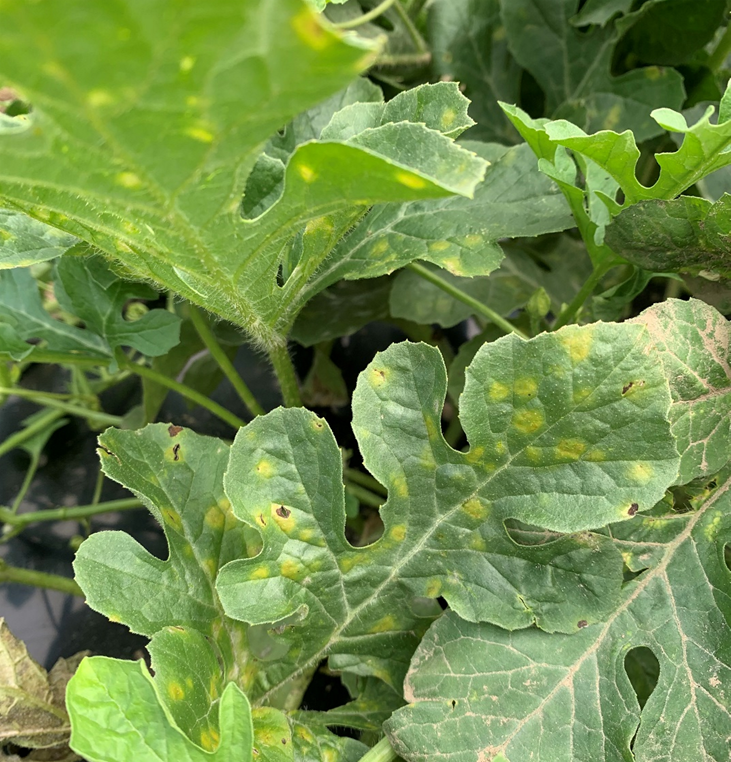Powdery mildew was found on three cultivars of seedless watermelon at the Clemson Coastal Research and Education Center (REC) on Tuesday, May 23, according to Tony Keinath, a former Clemson plant pathologist, in The South Carolina Grower.

All watermelon crops in South Carolina should be scouted for powdery mildew. If the disease is observed, producers should spray to prevent powdery mildew, which can reduce yields up to 40%.
For scouts and growers looking for the disease, it is visible by bright yellow spots at the tips of leaves. The spots are pale green to pale yellow on the underside of the leaf. White, powdery fungal growth may be present, but it does not develop on watermelon as much as it does on squash.
The slightly cooler temperatures during the past week have likely contributed to powdery mildew showing up on watermelon. This year’s weather has not been as dry as in previous years when powdery mildew was found.
If growers apply an conventional fungicide or one of several organic fungicides, like Organocide or sulfur, it will suppress symptoms on the tops of leaves. Systemic or translaminar conventional fungicides are best at reducing powdery mildew on the undersides of leaves. Be careful spraying sulfur and oil products, like Organocide or Neem, when temperatures are above 90 degrees Fahrenheit on sunny days. These products can burn leaves.
Crops that already have been sprayed with a protectant fungicide, such as chlorothalonil, as part of the watermelon fungicide program are somewhat protected against powdery mildew, but they should still be scouted. Chlorothalonil is only partially effective. If cool weather continues, a powdery-mildew specific fungicide is needed.
In a previous study at the Coastal REC, chlorothalonil rotated with sulfur had the highest weight of marketable fruit. This program can be used by growers who want to minimize the cost of powdery mildew fungicides. Sulfur volatilizes and helps control powdery mildew on the bottom of leaves.









